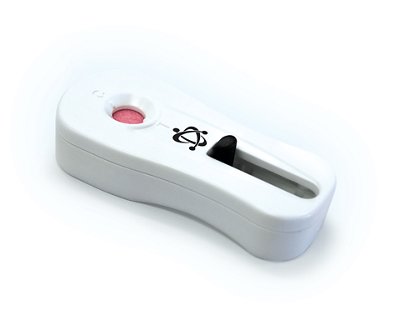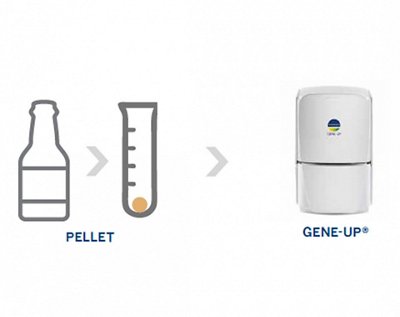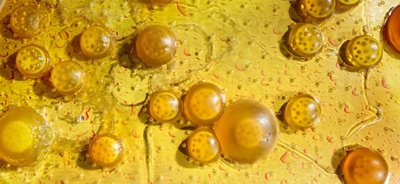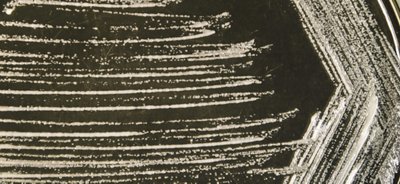Part 4 - Beer Spoilage Detection
What Factors to Take Into Consideration When Choosing the Right Testing Technology?
November 17, 2020

BEER SPOILAGE DETECTION: WHAT FACTORS TO TAKE INTO CONSIDERATION WHEN CHOOSING THE RIGHT TESTING TECHNOLOGY?
So you have decided that the moment is right for your brewery to bring in-house the quality control testing for the detection of potential spoiler presence as part of your quality control management programme with a view to preserving the quality of your beers and equally the reputation of your brewery.
You have set objectives for your quality control plan with regards to what is an acceptable risk level and what is not. The production team and management team are fully aligned with your aims. Equally you have defined your critical points where you want to test, which organisms to test for and what frequency you wish to test. In short, you quality control plan is coming together nicely.
Now the question of what technology to use (or should you restrict yourself to only one?) for the testing needs to be looked at. The first step is to revisit your quality control strategy and aims and discuss these with the head brewer so as to decide what your needs from a test should be:
1) How quickly do you need the results (e.g. when you are set up for isobaric production, same day results become essential for rapid decision making) from a QC perspective but also from a production and logistics platform perspective?
2) How specific do you want to be with your test? Do you need to be able to identify the species and even sub-species of micro-organism. Will this degree of specificity impact your decisions and consequent corrective actions?
3) What level of sensitivity do you need for you to feel comfortablewith regards to risk management and decision taking?
4) How is your laboratory structured today in terms of layout and also expertise and available resources for the introduction of further in-house testing?
“BREWING A GREAT BEER REQUIRES A DEDICATION TO QUALITY ASSURANCE.”
SPEED OF RESULTS
Presumably, you have decided to bring spoiler testing in-house, closer to the site of production in order to have a better risk management set up and reactivity in case of the appearance of problems. Likewise, to be able to make informed proactive decisions during the entire production process thanks to the rapid actionable data coming from the QC laboratory. Certain steps will require results more quickly than others (i.e. beer in the bright tank prior to bottling will often remain there for less than 24 hours). Don’t forget as well that you will be able to expedite your finished beers more rapidly which will help the head brewer in terms of storage space at the brewery and the financial controller will also be happier.
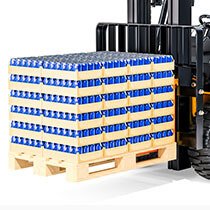
SPECIFICITY OF THE TEST:
A non-specific screening test :
A non-specific screening test can be considered in certain instances as a means to flagging a potential problem. Depending on the test in question, the lack of specificity may not be able to tell you whether it is a microbial or simply a cleaning issue however in the case of a sanitiser check post cleaning, this could be sufficient to validate your cleaning process e.g. CIP procedure. A good example of this is the use of the Adenosine Triphosphate ATP bioluminescence test on water rinse samples post-cleaning. If the value is positive according to brewery validated standards (e.g. > 10 RLU cut-off point), then the cleaning may need to be repeated again. In traditional microbiology culture tubes/plates the colour change and/or colony formation will not tell you definitively what organism or family of organisms you are identifying (despite what is claimed) or even the level of contamination which is key when wanting to take a decision based on the results (e.g. you may have positives for organisms that are not of concern and likewise may miss potentially problematic microbes)
Examples of a non-specific test:
1) ATP bioluminescence testing is a simple test method which verifies cleaning effectiveness in seconds. The science is based on the detection of organic residues on surfaces and in water samples using a bioluminescent reaction (where there is ATP, there are cells but this could range from malt/hops residue, brewer’s yeast or beer spoilers).
2) Universal Beer Agar: Non-specific traditional microbiology culture media where beer is added to cultivate bacteria and yeasts encountered in the brewing industry. Visualisation of growth colonies can take up to 10 days. Then the colony requires further biochemical identification (e.g. API strip identification) in order to decide its relevance to the beer quality.
Specific tests : These can be divided into 1) specific screening test for a family of beer spoilers (e.g. lactic acid producing bacteria) 2) specific identification of a bacterial species. As expected, more specific than the non-specific screening tests described above.
The level of identification that the QC manager/brewers needs to take the “right decision” is open for discussion. Let’s consider the lactic acid producing beer spoilers.
The published list of beer spoilers is constantly evolving in response to the bacteria’s capacity to evolve and develop resistance to its beer environment (e.g. pH, alcohol %, hop alpha iso-acid presence). New species are recognised to be able to survive the “hostile environment” and thus become spoilers.
If a technology is focused on the specific identification, then it will not detect the appearance of new spoilers who have adapted and thus will run the risk over time of missing beer spoilers with the QC and economic consequences. Furthermore, the specific identification of a given spoiler e.g. L. brevis versus L. buchneri will have no impact for the brewer on the subsequent corrective action necessary. On the one hand, it is important for the brewer to identify all lactic acid producing beer spoilers that could survive in the harsh beer environment. This is the approach taken by certain technology platforms who have opted for the detection of horA and horC hop resistance presence.
Examples of a beer spoilage organisms that are responsible for the vast majority of problems and should be identified:
1) Lactic acid bacteria beer spoilers (only the relevant Lactobacilli and Pediococci).
2) Lactic acid bacteria beer spoilers containing hop resistance genes (horA and horC).
3) The obligate anaerobic bacteria – Megaspaera spp. and Pectinatus spp.
4) Dekkra spp. yeast (wild yeast – Brettanomyces).
5) Sacharromyces cerevisiae var diastaticus.
SENSITIVITY OF THE TEST:
The relevance of using a test not only depends on it specificity (ensuring when there is a positive, it is only a potential beer spoiler that has been detected) but also its limit of detection (its “sensitivity”) because if it is not sufficiently low, you will only detect the presence of a microbial contaminant once the beer quality has already been impact or it is too late for any corrective action and hence financial consequences.
An adequately low detection limit will give you “time for a corrective action”. In this case, it is expressed as number of CFU/ml [colony forming units] that the test is reliably capable of detecting.
The threshold value needs to be sufficiently low to:
1) Ensure a positive before any sensory deficit to the beer can be detected
2) Sufficiently low such that there is a very low probability that the micro-organism can successfully propagate to a level to impact the beer quality during the shelf-life of the beer
3) Allow sufficient time for the brewer/quality manager to take corrective action where appropriate
There are microbiological methods to increase the sensitivity of a test, notably to inoculate the sample into an adapted enrichment broth (often between 24 and 48 hours) and place in an incubator at a given temperature so that the micro-organisms multiply prior to testing, but the advantages of a rapid result are lost.
EASE OF INTRODUCTION OF THE TECHNOLOGY INTO THE LABORATORY – EASE OF USE IS KEY
Whether a technology is the right fit for you not only depends on the above criteria but also depends on the ease with which it is deployed in your laboratory and this depends on several factors:
1) Available space in your laboratory
2) Is your laboratory today equipped for the culturing of microbes
3) How much time is the laboratory manager dedicated to the laboratory
4) Is your laboratory manager already trained and skilled in microbiology techniques.
Once this is defined, you are ready to look at the beer spoilage detection technologies that exist today.
RELATED PRODUCTS
